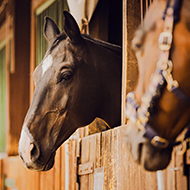‘Booming’ cassowary call could inform conservation
Cassowaries are difficult to breed as they are territorial outside breeding season.
Chester Zoo has discovered a mystery call made by female cassowaries in front of the male of the species.
Scientists believe that the ‘booming’ sound, inaudible to human ears, could support conservation schemes for the endangered birds.
Zoë Sweetman, team manager of parrots and penguins, first became aware of the call when she noticed a female cassowary acting unusual around a male. It had changed its behaviour and appeared to be making a vocal posture.
A search through scientific literature did not uncover any details on the behaviour. There had been a few studies from the 2000s which suggested infrasound communication, below the threshold of human hearing.
To investigate the cassowaries’ behaviour more thoroughly, keepers set up cameras and sound recorders in their enclosure.
The recording equipment revealed that the female cassowaries had in fact been making a deep booming sound. This sound is difficult for them to make, so Ms Sweetman theorised that they were making the noise for a reason.
Expanding the study to BirdLand in Cheltenham and Avifauna in the Netherlands proved that this phenomena was not unique to Chester Zoo.
The keepers believe that improved understanding of cassowaries could aid their conservation. Cassowaries are known to be difficult to breed, since they are territorial outside of breeding season.
Rebecca Lewis, a conservation scientist at Chester Zoo, said: “We’re pretty confident the sound is related to mating. Breeding success is limited in zoos and poor timing of mixes resulting in conflict is a common issue.
“Understanding the calls of these birds and the part they play in courtship might help time mixes more accurately, taking the guesswork out of when to pair birds.”
Ms Sweetman said: “We realised this was something worth researching because it’s a lot of effort for the females to make this strange, low sound. They must be doing it for a reason.
“This became a full study which formed part of my Master’s.”
The recordings and data are currently being kept secret, but will be included in a forthcoming scientific paper.
Image © Shutterstock



 Zoetis has launched a new survey to identify management techniques for Equine Herpes Virus (EHV).
Zoetis has launched a new survey to identify management techniques for Equine Herpes Virus (EHV).